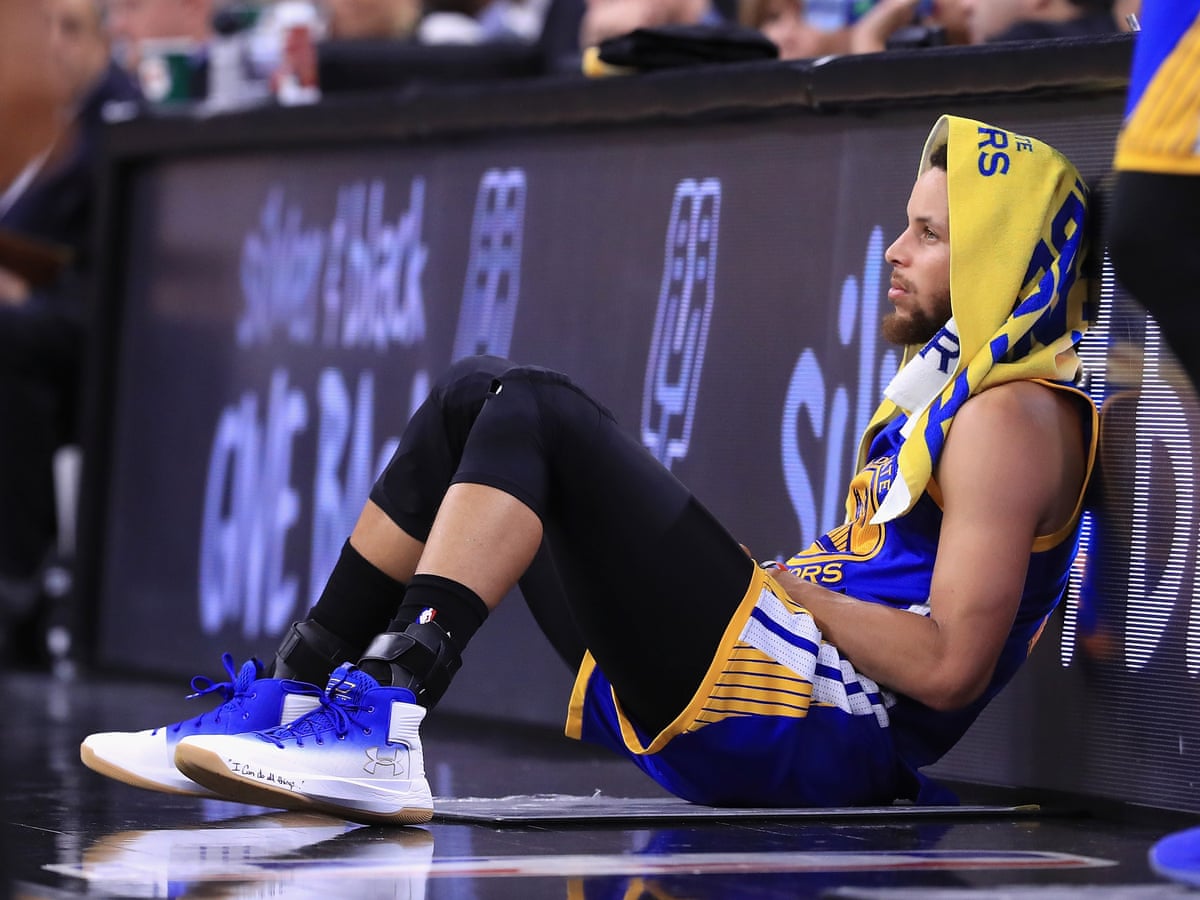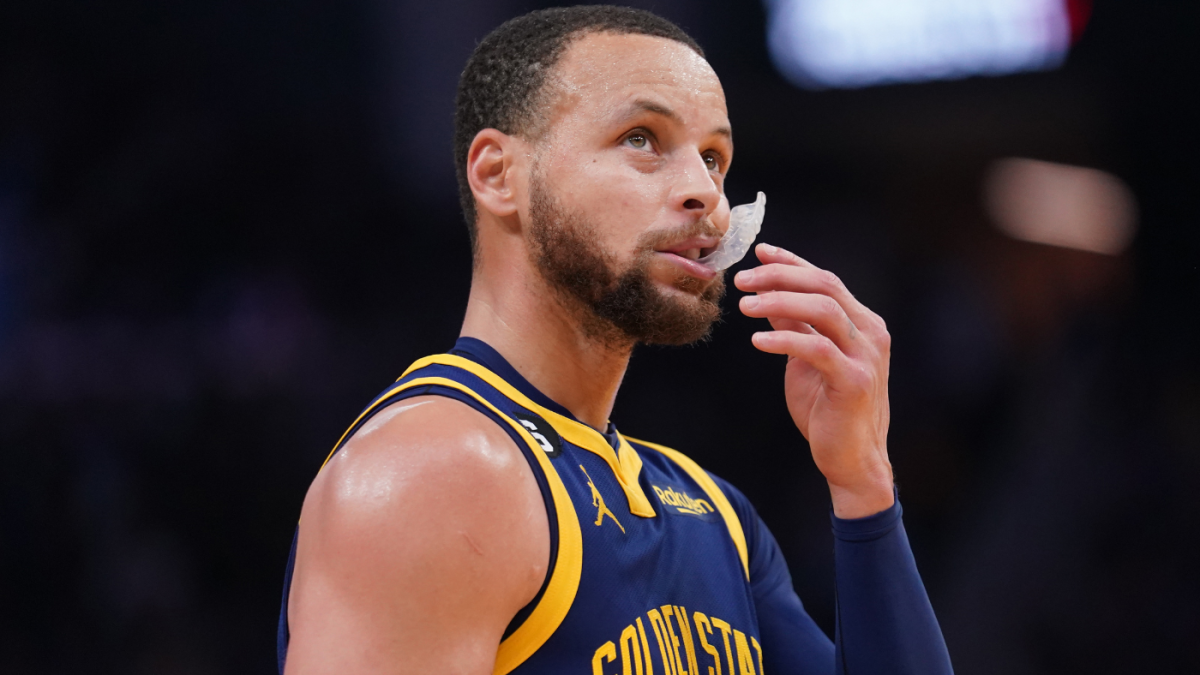Stephen Curry’s NBA career has had a rocky start.
While the Warriors guard displayed the star potential that earned him the No. 7 pick in the 2009 NBA Draft early and often, he struggled with ankle injuries for the first three seasons of his career.
Curry’s ankle problems drew comparisons to Grant Hill, another Hall of Famer whose prime was cut short by ankle injuries. Former Warriors general manager Bob Myers once stated that he had never seen anyone sprain their ankle in the “nontraditional, crazy ways” that Curry did, and that he hasn’t seen it since.

Here’s how Curry’s ankle injuries impacted his NBA debut and how he overcame them to become an all-time great.
Timing of Stephen Curry’s ankle injury in the 2009-10 season
Curry misses the first game of his rookie season on March 17, 2010 due to a sprained left ankle. He is listed as day-to-day despite wearing a walking boot.
Curry returns from a two-game absence on March 20, 2010. In 25 minutes, he scores nine points on four-of-ten shooting.
April 14, 2010: The Warriors win their final game of the season against the Trail Blazers.

Curry has appeared in 80 of the possible 82 games, averaging 17.5 points, 5.9 assists, and 4.5 rebounds. He is named to the All-Rookie First Team along with Tyreke Evans, Brandon Jennings, Darren Collison, and Taj Gibson after finishing second in Rookie of the Year voting.
The 2010-11 season
Oct. 29, 2010: Curry reinjures his right ankle in the second game of his sophomore season after spraining it in a preseason game and aggravating it in Golden State’s season-opening win over Houston.
Curry is forced to leave the game with 6:03 left in the third quarter and does not return.

“It’s more rehab; that’s all it means,” Curry explained. “I just have to be smart about it now and try to get it back to 100% and stronger so that if I step on someone’s foot, I can recover.”
“We’ll find out tomorrow, and see how it reacts.”
Curry scores 20 points in a win over the Jazz on November 5, 2010 after missing two straight games due to a sprained right ankle.
Curry leaves Golden State’s loss to San Antonio in the second quarter with a right ankle sprain on December 8, 2010. His teammates assist him off the floor, and he does not return. X-rays reveal nothing.
Dec. 25, 2010: Curry returns to the Warriors for their Christmas Day game against the Trail Blazers. He only has four points on 2-for-15 shooting, but he assists 11 times in the win.
Curry had been out for the previous six games due to an ankle injury.
Curry appears in Golden State’s final game of the season on April 13, 2011. He finishes his sophomore season with 74 games played and averages 18.6 points, 5.8 assists, and 3.9 rebounds.
May 25, 2011: Curry underwent surgery on his right ankle in Charlotte, North Carolina, more than a month after Golden State’s regular season ended. Curry missed eight games due to the injury during the 2010-11 season.
The 2011-12 season
Curry rolls his surgically repaired ankle in the second game of the season against Derrick Rose and the Bulls on December 26, 2011. Following the game, he undergoes X-rays, which reveal no fracture.

Curry has sprained his ankle for the second time in seven days.
Curry does not play against the Knicks on December 28, 2011 due to a sore right ankle. He is said to be sitting as a precaution.
Curry sprains his right ankle again in his third game back from injury on January 4, 2012.
Jan. 20, 2012: After missing eight straight games due to a heavily taped ankle, Curry scores 12 points on 5-for-15 shooting.
Curry strains a tendon in his right foot in the first quarter of Golden State’s win over Phoenix on February 22, 2012, limiting him to 10 minutes of play.
Due to a strained tendon in his right foot, Curry will miss the Warriors’ first game following All-Star Weekend.
Feb. 29, 2012: Warriors head coach Mark Jackson inserts Curry as a decoy in the final seconds of a close game against the Hawks. On the possession, David Lee scores a layup to give the Warriors the lead.
March 5, 2012: Curry returns to score 12 points in nine minutes against the Wizards after missing three of four games and playing only three seconds in the one he did play in.
Curry plays against the Clippers on March 11, 2012, despite being a game-time decision due to a “mildly” sprained right ankle. After nine scoreless minutes, Jackson removes him from the game.
“I just felt like it wasn’t right to throw him out there,” Jackson explained. “He appeared to be gutting it out. We were leading by 17, and I told him, ‘If we can’t close this out, we don’t deserve to win.'”
It was Curry’s final game of the 2011-12 season.
Curry has surgery on his right ankle on April 25, 2012. According to the Warriors, the surgery “revealed a stable ankle with no structural damage and consisted of cleaning out loose debris and scar tissue.”
Curry has received full medical clearance to resume all basketball-related activities, the team announced on September 20, 2012.
Curry signs a four-year, $44 million contract extension with the Warriors ahead of his fourth season on October 31, 2012. The offer is immediately interpreted as a possible discount.
“Obviously, if you look at other people in my draft class or other people with comparable stats, I might be below their pay grade, but I’m not really concerned about that,” Curry explained. “I could be paid too little. I just don’t want to be that guy who gets paid too much. That is my goal.”
Curry averaged 17.5 points, 5.8 assists, and 4.1 rebounds per game over the course of three seasons. He appeared in 180 games out of a possible 230.
How Stephen Curry overcame ankle problems to become an NBA star
There were fears that Curry’s ankle surgery after the 2011-12 season would be much more invasive than it turned out to be.
According to ESPN’s Pablo S. Torre, a series of stress X-rays taken while Curry was sleeping ruled out structural damage to the ligaments in his right ankle. It did, however, reveal “thick, sticky bands of scar tissue” described as crab meat, as well as “inflamed tissue, bone spurs, and cartilage chips.”
Along with the surgery, Curry modified his training under the supervision of Warriors performance director Keke Lyles. What is the most significant difference? Not just his ankles, but also his hips and glutes. The objective was to “load his hips to help unload his ankles.”
According to Torre, Curry was initially able to deadlift between 200 and 225 pounds — a weight-lifting exercise that works the glutes and helps improve hip mobility. After a year in Lyles’ program, he could deadlift 400 pounds, which was second only to Festus Ezeli, a 6-11, 265-pound center on the Warriors.
“Steph became more aware of how he needs to take care of his body,” according to his father, Dell Curry, to ESPN. “It helped him understand that his body was his career.”